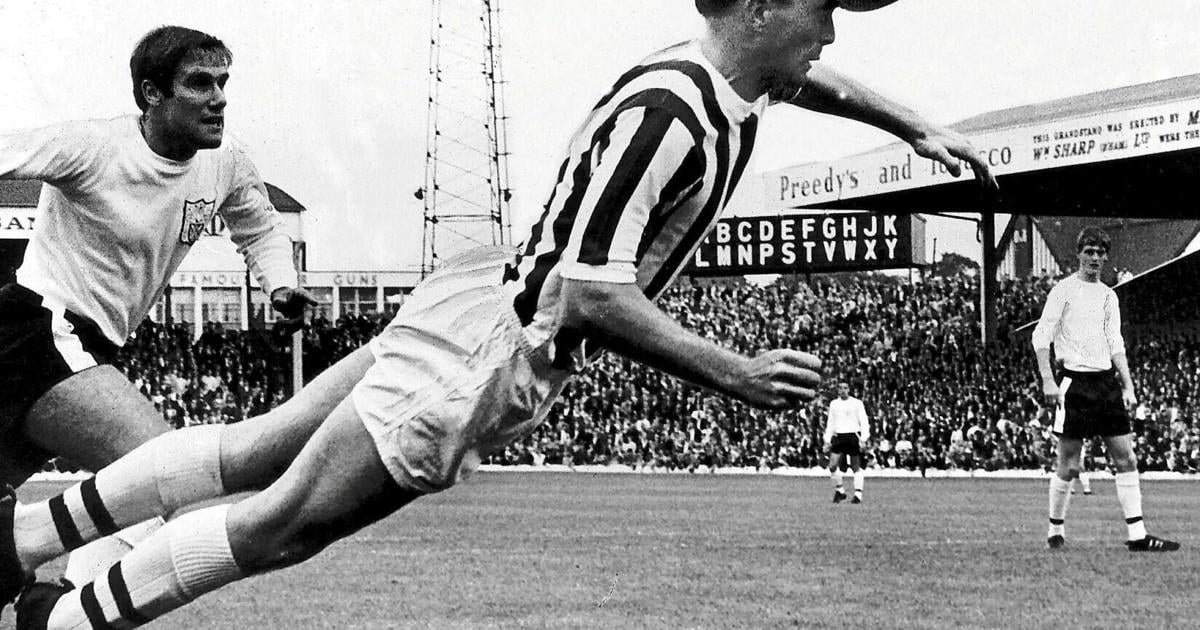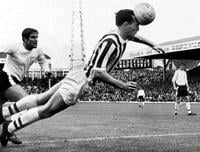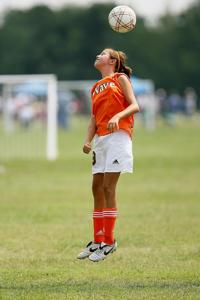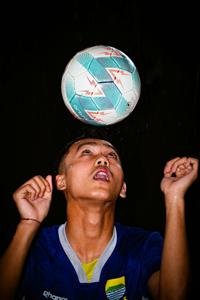Jeff Astle heading the ball, when he played for West Bromwich Albion. (SWNS)
By Stephen Beech
Headers may lead to alterations within the brain, suggests new research.
Scientists found that the most active footballers had “much greater” disruption in the brain’s microstructure compared to the least active players.
The study of amateur footballers found that more frequent headers was linked to changes within the folds of the brain.
American scientists say their findings do not prove that heading the ball causes brain changes, it only shows an association.
But study author Dr. Michael Lipton said: “While taking part in sports has many benefits, including possibly reducing the risk of cognitive decline, repetitive head impacts from contact sports like soccer may offset those potential benefits.
“Our study found that people who experienced more impacts from headers had more disruptions within a specific layer in the folds of the brain, and that these disruptions were also linked to poorer performance on thinking and memory tests.”
The research included 352 amateur footballers, with an average age of 26, and 77 athletes in non-collision sports with an average age of 23.
(Photo by Misha Zimin via Pexels)
Athletes’ soccer activity was surveyed to estimate the number of head impacts over one year.
Football players were divided into four groups with the highest group having an average of 3,152 headers per year, compared to 105 headers in the lowest group.
Athletes underwent brain scans.
Researchers used the scans to examine the microstructure of the juxtacortical white matter within the folds of the brain.
That layer of white matter lays alongside the grey matter of the cerebral cortex, the outer layer of the brain.
When analyzing scans, the research team looked at how water molecules moved in the folds of this brain layer.
They found that players in the highest group had “much greater” disruption in the microstructure of that area of the brain compared to players in the lowest group and non-collision sport athletes.
(Photo by Pixabay via Pexels)
As the number of headers increased, the organization of water molecule movement deteriorated, indicating more disruptions and suggesting worsening of the brain’s microstructure.
Athletes also took tests to examine thinking and memory skills.
The research team found that players with worse performance on tests had more disorganized movement of water molecules in that area of the brain.
Researchers also found that disruptions in the folds of the orbitofrontal brain region, just above the eye sockets, partially affected the relationship between repeated head impacts and thinking and memory performance.
Dr. Lipton, of Columbia University in New York City, said: “Our findings suggest that this layer of white matter in the folds of the brain is vulnerable to repeated trauma from heading and may be an important place to detect brain injury.”
He added: “More research is needed to further explore this relationship and develop approaches that could lead to early detection of sports-related head trauma.”
(Photo by Muhammad Syahrul Firdaus via Pexels)
The latest findings, published in the journal Neurology, add to growing concern about the health effects of headers first raised following the death, aged just 59, of former England and West Bromwich Albion striker Jeff Astle in 2002.
The cause of his death was a degenerative brain disease that had first become apparent as much as five years earlier.
A coroner found that the repeated minor trauma of heading the ball had been the cause of Astle’s death, as leather footballs used in his playing days were considerably heavier than the plastic ones used now, especially when wet.
In 2015, his family launched the Jeff Astle Foundation, raising awareness of brain injury in all forms of sport, as well as offering support to those affected.
The charity has grown in size with high-profile patrons including former England internationals Alan Shearer and Gary Neville.






